Planting a Pot with Only One Plant
Proportion, color, and shape are all important when highlighting a solo performer
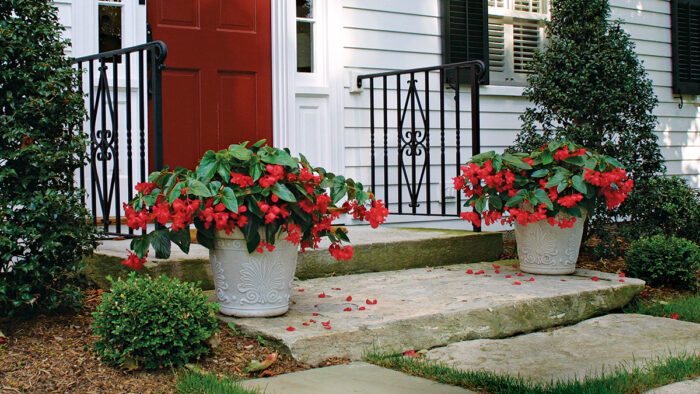
Contrary to the reliable strategy of using a plethora of plants in a single container, one plant in a pot can really shine. Placing just one plant in an urn or container enables it to achieve its full potential in size and vigor, which would be compromised if it were competing with other plants for space, light, and nutrients. Many plants with unique attributes can attract attention when standing alone. Consider the structure of shrubs like hydrangeas, which enjoy stretching out their branches in every direction, or plants like New Guinea impatiens with their tightly rounded habits. Planted singly in a container, these plants can impart a dramatic impact wherever they are displayed.
Choose plants for maximum impact
In a container that has many different plants, a failure is easy to hide. If one plant doesn’t live up to its potential, the other plants can compensate and the container will still look presentable. If the pot has just one member, it had better be a good one. When searching for a perfect plant to fill a pot, look for long-lasting, attractive foliage; exceptional form; and perhaps an added bonus, like a long bloom period.
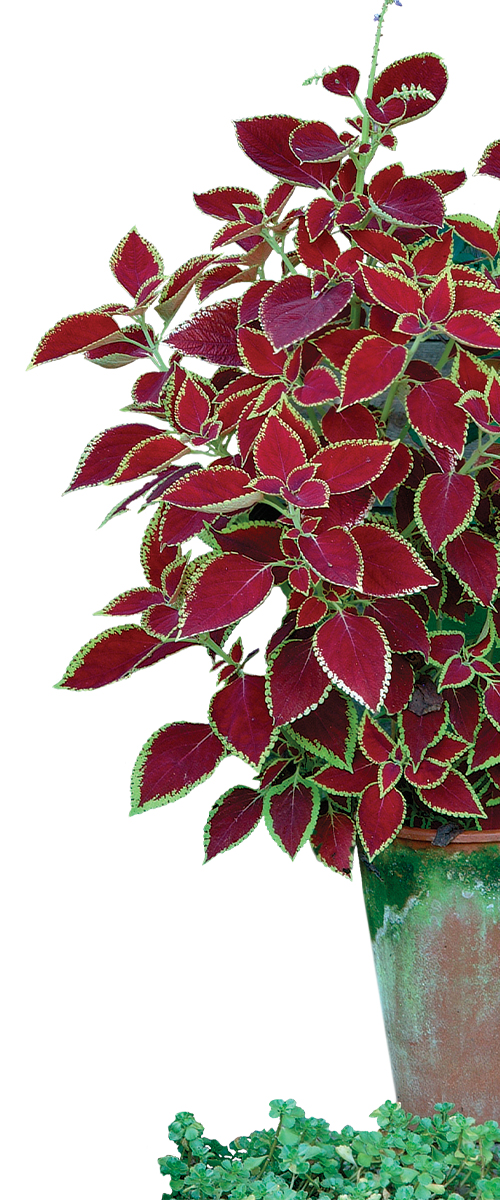
Cannas (Canna spp. and cvs., USDA Hardiness Zones 8–11) are a good example of plants to grow on their own. Beautiful but needy, they do not share water and nutrients well with pot mates. Large cultivars, such as ‘Australia’ or ‘Pretoria’, develop their rhizomes quickly, even in a container. They need all of the space a pot has to offer to produce their numerous stems of abundant flowers. Together with their bold leaves, they make a dramatic statement.
Like cannas, most shrubs grown in confined quarters need the entire soil mass of a pot to grow and produce flowers. Vigorous shrubs, such as butterfly bushes (Buddleia davidii* and cvs., Zones 5–9), are much better grown alone in a pot as they quickly develop a mass of shoots and roots. Hydrangeas (Hydrangea spp. and cvs., Zones 4–9) exhibit a rounded form that looks better displayed alone.
The hardiness of a woody plant for a container is an important issue. Unless I know that I can move a container into a greenhouse or dig the shrub out of the pot for the winter, I always choose shrubs that are a zone hardier than recommended for my climate. Ideally, shrubs or trees are best moved to a spot close to a house or building, preferably on the east side so that they’re sheltered from winter winds. You can pile the area around the pot with straw to provide an even cozier environment. It’s also important that the pots you choose are made of materials that are resistant to winter damage, such as concrete, wood, resin, or plastic.
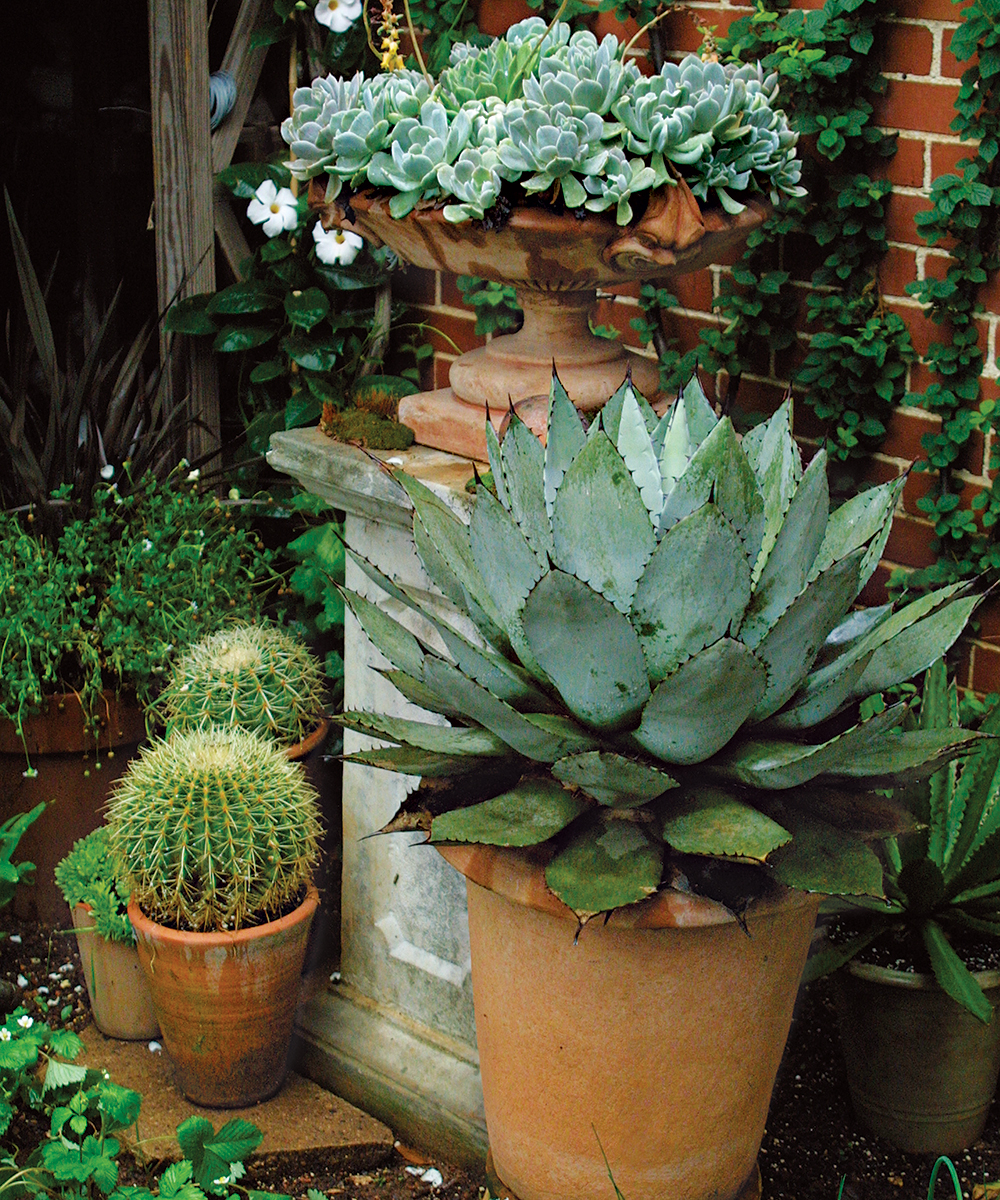
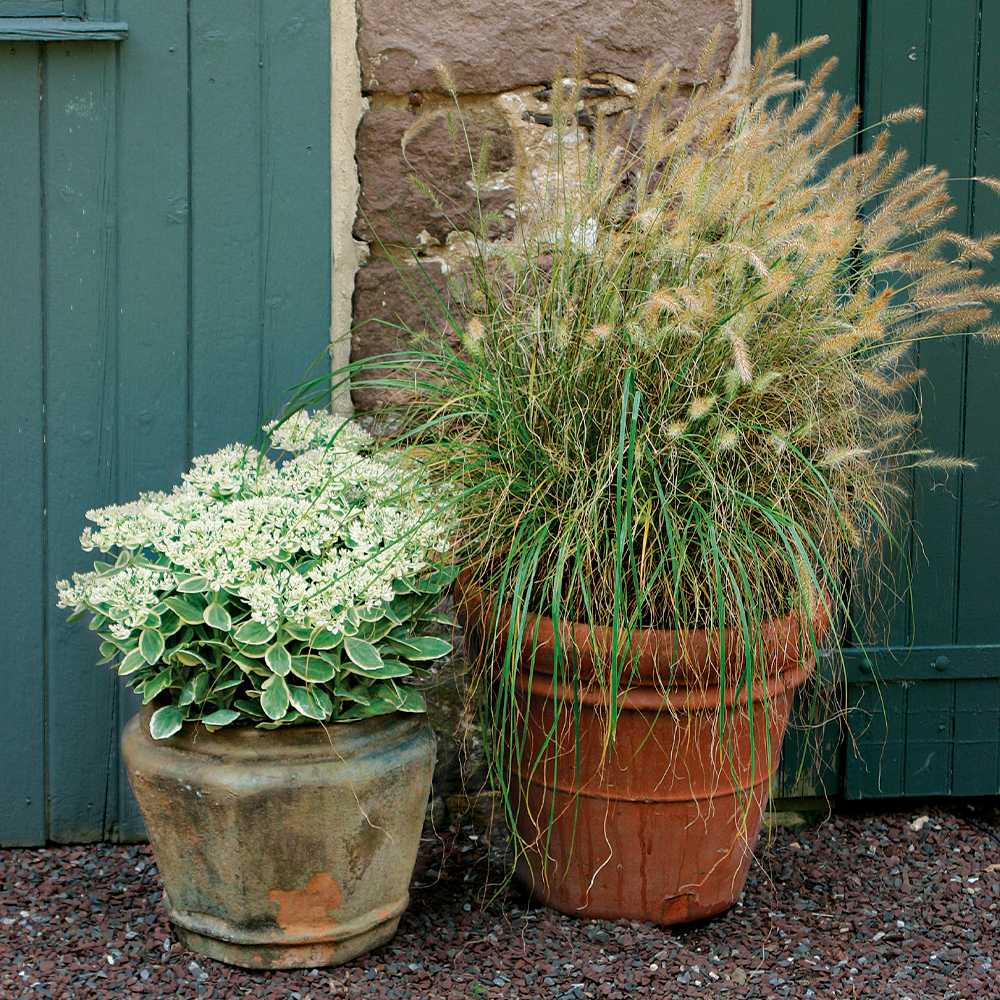
The restricted root area of a pot keeps some plants small, so the range of material for specimen plantings can be broadened to include plants that would grow larger in the ground. This is most evident when using ornamental grasses, shrubs, and trees. Ornamental grasses quickly become spectacular specimens in containers. Their inflorescences add grace and movement to the garden. Grasses such as ‘Northwind’ switchgrass, with its tall, blue foliage, mature to a smaller height when in pots. Fountain grasses perform well when confined, and they can remain outdoors for fall and into winter, giving you three seasons of interest. Shrubs such as ‘Red Sprite’ winterberry (Ilex verticillata ‘Red Sprite’, Zones 5–8), redtwig dogwoods (Cornus alba and cvs., Zones 2–8), and red osier dogwoods fill out a container nicely. They take a back seat to more colorful specimens during the summer, but in winter, they light up dreary days with colorful berries or stems.
Many annuals and perennials are good to grow singularly in pots, as well. Annual impatiens quickly form a nicely rounded mound, bloom nonstop all summer, and can be grown in sun or shade. Dragon Wing® Red begonia is one of the ultimate plants for a container. Its shiny foliage fills in quickly, and it blooms nonstop. It gets large by the end of the growing season, so a medium-size to large pot works best. Umbrella plant is great for a pot without a drainage hole because it needs constant moisture; it also adds an exotic look to any location. Perennials like ‘Sum and Substance’ hosta and ‘Golden Sculpture’ hosta add bold drama to a shady patio with their chartreuse foliage.
Matching a plant to its pot
It’s easy to get caught up in standard design rules, but the truth is that you can match almost any plant shape with almost any pot shape as long as the scale is balanced. When a container suits its occupant, and vice versa, it just looks right. A plant’s size usually dictates the size of the pot, but the shape of the pot is up to you. Experimentation and experience will increase your confidence and enjoyment when choosing just the right container for a cohesive partnership.
 |
 |
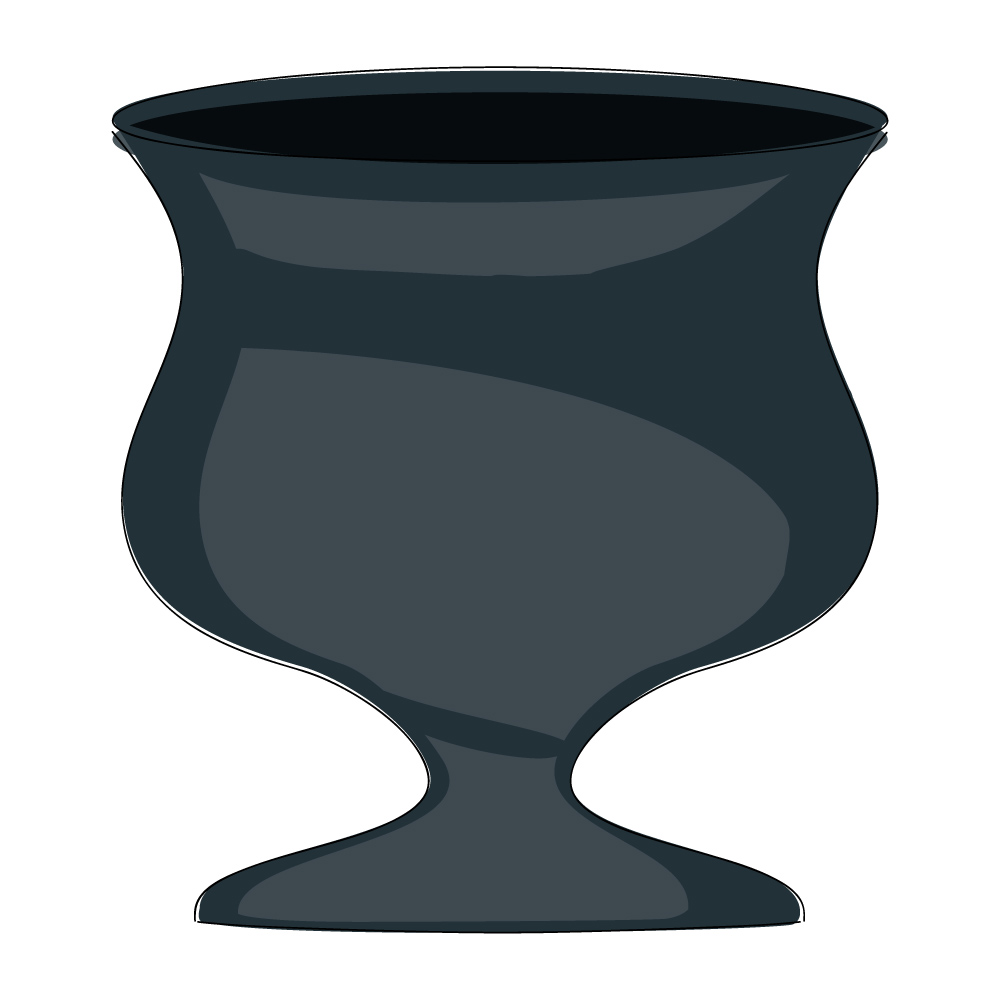 |
A tall, narrow pot
If a plant has a strong vertical habit, the look is intensified when put in a tall, narrow pot. A plant with a rounded habit placed in a tall pot may take on the appearance of a cone with a big scoop of ice cream on top.
A short, squat pot
When a short, rounded pot is used for a plant with a strong vertical habit, it looks like it is anchored to the ground.
A medium-size pot
If the container is about the proportion of the expected mature size of the plant within, the combined shapes take on the look of a balanced composition.
Things to consider when matching a plant to a pot
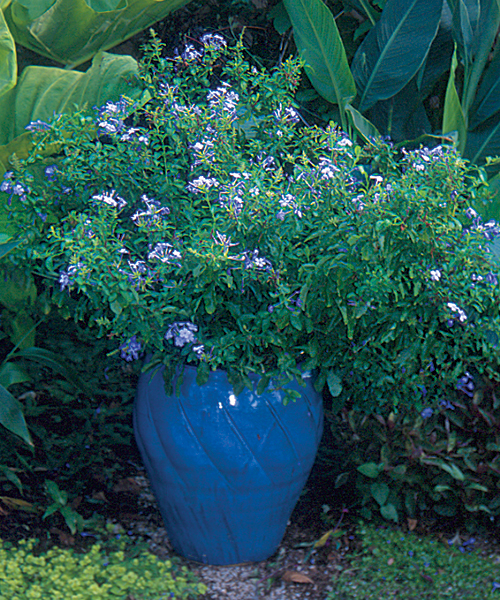
Let the colors of both plants and pots help dictate your design. I particularly like the jewel colors of glazed ceramic pots as they can be a contrast to plants or an extension of the same hue. One of my favorite color-harmony combos is Cape leadwort in a blue pot. The plant’s exuberant stems reach out in all directions, creating a tumble of blue flowers that mimic the same azure shade of the ceramic container in which it is planted. Cape leadwort’s wild form engulfs the pot just enough to create a living sculpture. A similar pairing is a short, dark purple pot planted with purple shamrock (Oxalis regnellii var. atropurpurea, Zones 7–10). The pairing of the shiny container surface with the sheen of the triangular purple leaves is outstanding. Another example is the reddish hue of a terra-cotta pot that serves as an anchor to the ground but becomes more of a focal point when combined with the rustic colors of ‘Autumn Joy’ sedum (Zones 3–11). To capitalize on contrast, forest green ceramic containers are stunning when planted with anything orange or red, such as a red-flowering annual tobacco (Nicotiana alata ‘Nicki Red’).
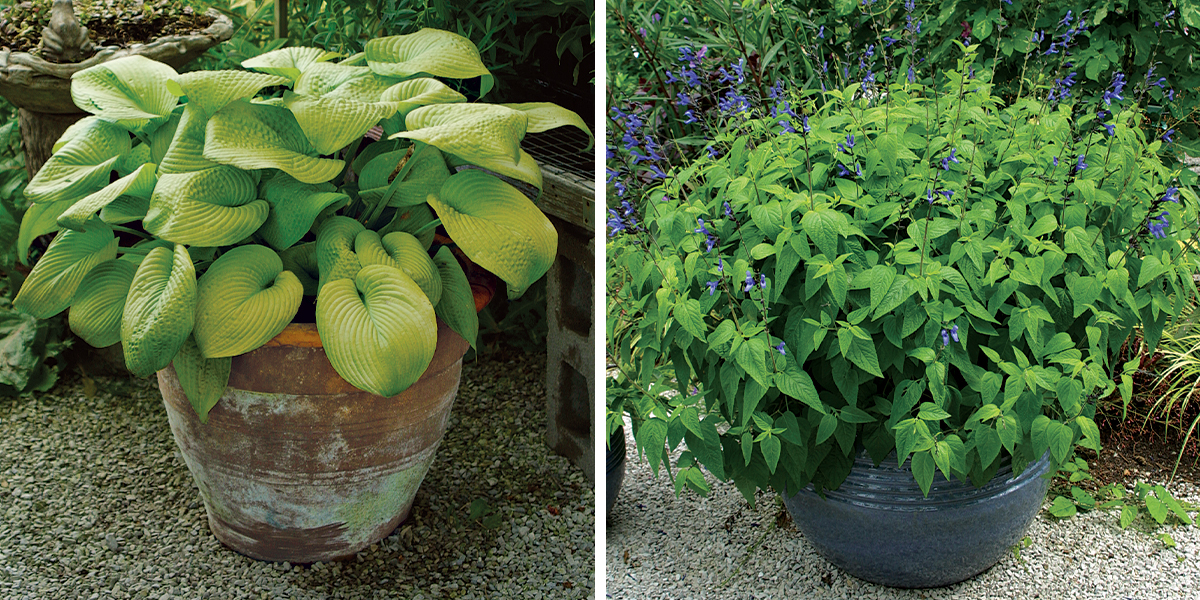
Another factor to consider when designing a one-plant pot is pairing the size and proportion of a plant with a complementary pot. In general, plants with a rounded habit are successfully paired with pots of low, chubby proportions. Blue anise sage, a great hummingbird plant, has an overall rounded form that looks stunning in a squat pot. The vertical effect of a larger, more upright pot can be enhanced by pairing it with a similarly shaped plant, such as a tropical smoke bush, cannas, upright coleus, or grasses. Top a small, narrow pot with a spiky hat by choosing a plant such as fiber optic grass or an agave (Agave spp. and cvs., Zones 9–11). The same look can be achieved with a larger narrow pot using a fountain grass. Ornate, flaring urns benefit from the blowsy habit of shrubs such as hydrangeas or flowering maples, which add Victorian charm to a cottage-garden setting. Draping ferns, such as foxtail fern (Asparagus densiflorus* ‘Myersii’, Zones 9–11), also work well.
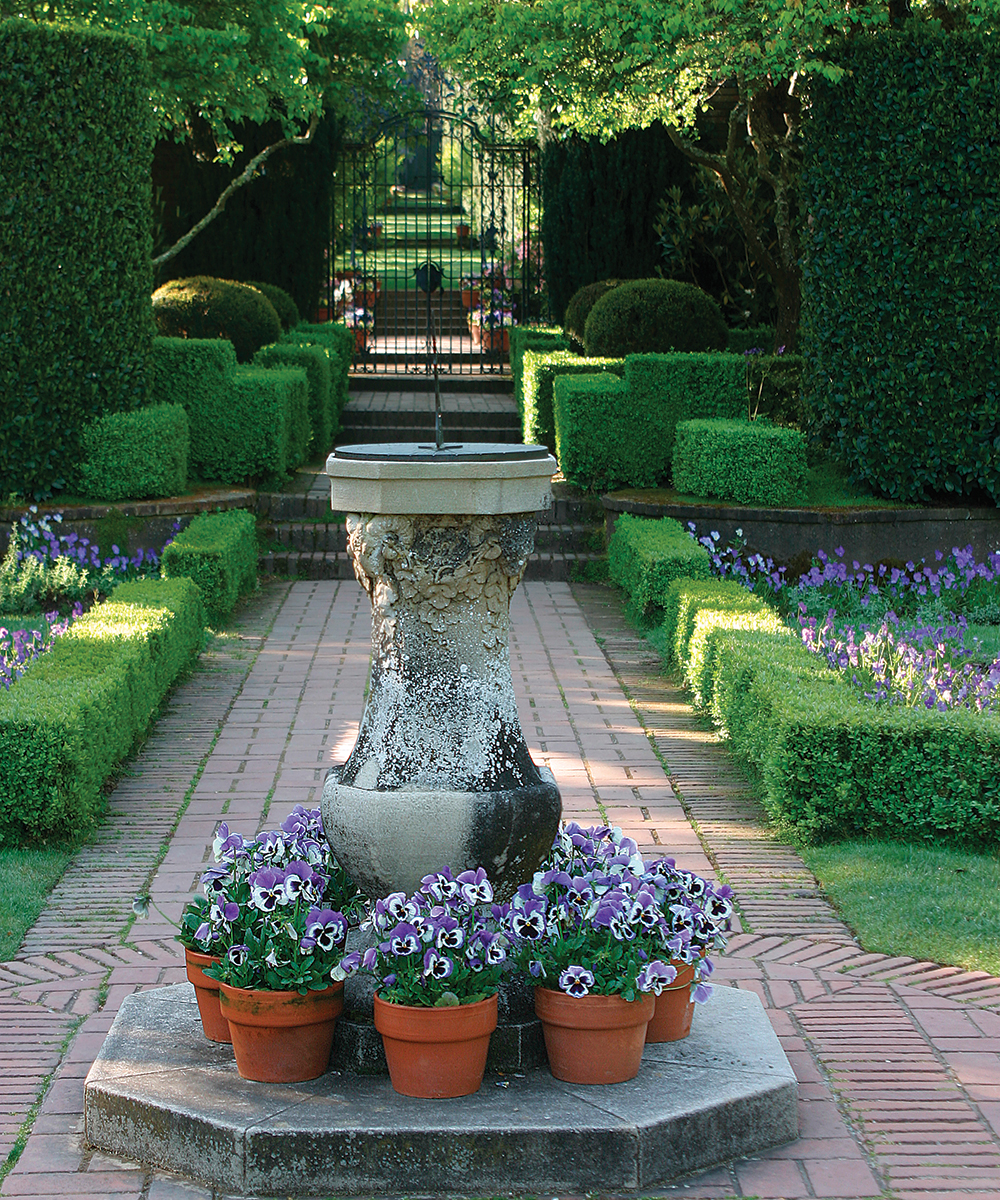
Use one-plant pots in several ways
The intrinsic beauty of one specimen plant in a pot can be used as a focal point or as an accent, leading the eye to a direction or destination wherever the container is placed. For example, a parterre garden with symmetrical beds can be connected into a whole by directing the eye to a single-plant container in the center of the garden. And a series of containers placed by a doorway directs a visitor to the point of entry. Pots placed along a garden walk draw you forward, perhaps to discover that the path continues on to a farther destination.
The design of a one-plant pot can sometimes be determined by the intended placement of the container. Scale is a strong criterion. A large ornamental grass complements an expansive hardscape area, such as a patio. Repetition of that same planting can create a vertical accent along a fence, which moves the eye along like a bouncing ball, giving it direction. Using a matched pair of conifers at a doorway provides symmetry and adds a sense of permanence, with the added benefit of being able to decorate the plants with lights for the holidays. If the entry is not obvious, the containers can help point the way.
Many plants have such strong individual attributes that a true appreciation of them and their singular beauty can only be fully appreciated by featuring them in a pot all their own. Simplicity is often a surefire recipe for success.
Great Plants for One-Plant Pots
Here are some of the author’s favorite specimens for one-plant pots.
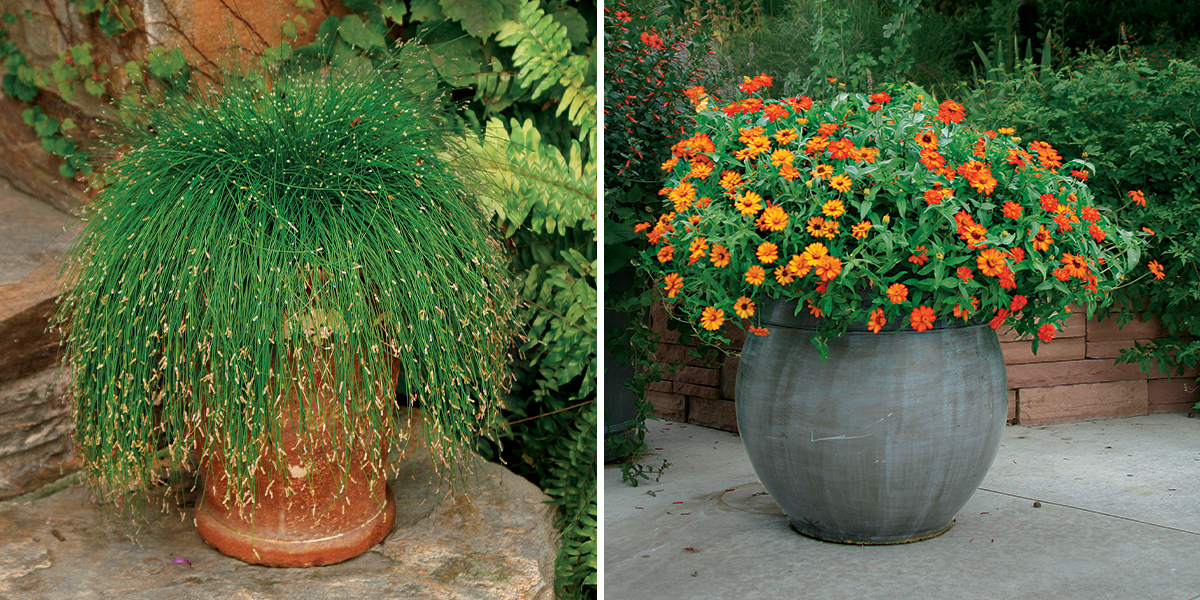
Annuals and tender perennials
- Blue anise sage (Salvia guaranitica ‘Black and Blue’, Zones 7–10)
- Cape leadwort (Plumbago auriculata, Zones 9–11)
- Chile pepper (Capsicum annuum cvs., annual)
- Dragon Wing® Red begonia (Begonia Dragon Wing® Red, Zone 11)
- Elephant’s ear (Colocasia esculenta* and cvs., Zones 8–11)
- Fiber optic grass (Isolepis cernua, Zones 8–10)
- Flowering maple (Abutilon spp. and cvs., Zones 8–11)
- Impatiens (Impatiens spp. and cvs., annual)
- Profusion Series zinnia (Zinnia Profusion Series, annual)
- Tropical smokebush (Euphorbia cotinifolia, Zones 9–11)
- Umbrella plant (Cyperus alternifolius, Zones 9–11)
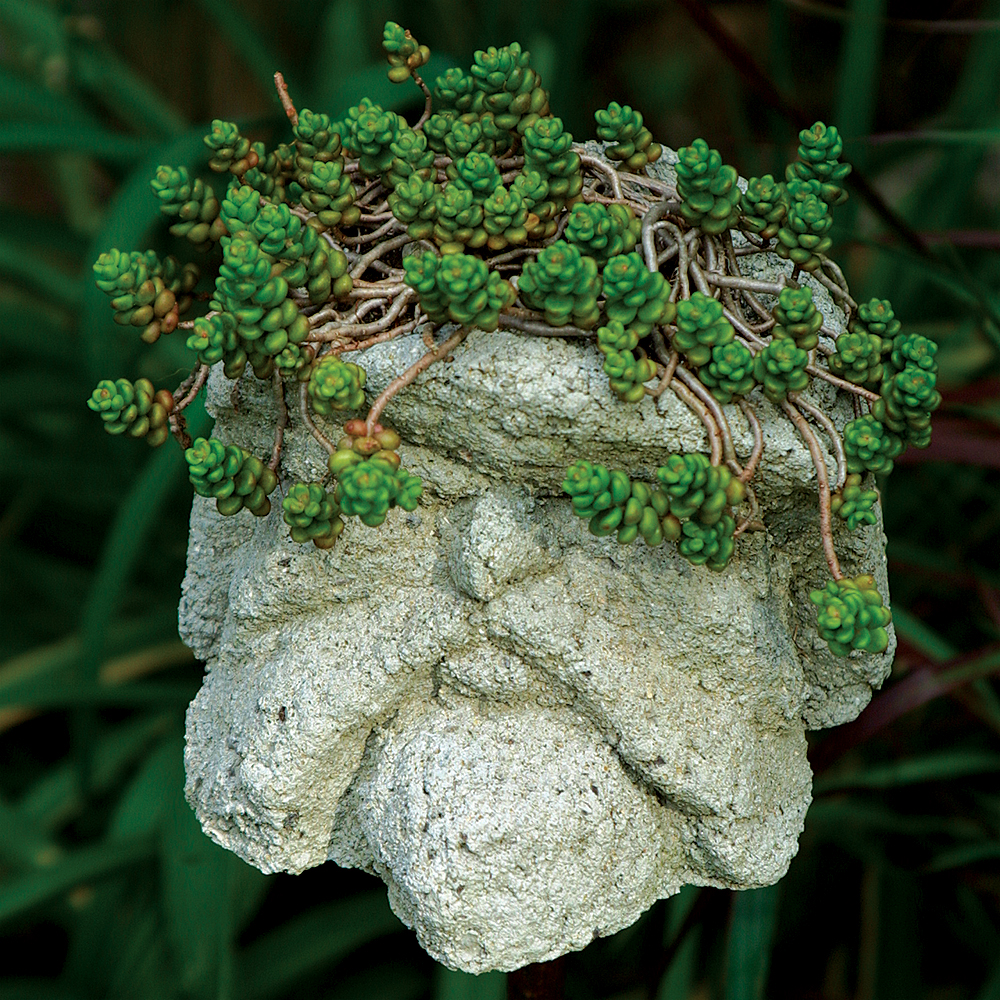
Perennials and grasses
- Anise hyssop (Agastache foeniculum and cvs., Zones 4–11)
- Black-eyed Susan (Rudbeckia hirta and cvs., Zones 3–7)
- Fountain grass (Pennisetum alopecuroides and cvs., Zones 6–9)
- ‘Gateway’ Joe Pye weed (Eupatorium maculatum ‘Gateway’, Zones 5–11)
- Hosta (Hosta spp. and cvs., Zones 3–9)
- ‘Rozanne’ hardy geranium (Geranium ‘Rozanne’, Zones 5–8)
- Sedum (Sedum spp. and cvs., Zones 3–9)
- Switchgrass (Panicum virgatum and cvs., Zones 5–9)
Trees and shrubs
- Bigleaf hydrangea (Hydrangea macrophylla cvs., Zones 6–9)
- Fastigiate hornbeam (Carpinus betulus ‘Fastigiata’, Zones 4–8)
- ‘Foxtail’ Colorado spruce (Picea pungens ‘Foxtail’, Zones 2–8)
- Mugo pine (Pinus mugo and cvs., Zones 3–7)
- Red osier dogwood (Cornus stolonifera and cvs., Zones 3–8)
- Small-leaved boxwood (Buxus microphylla and cvs., Zones 6–9)
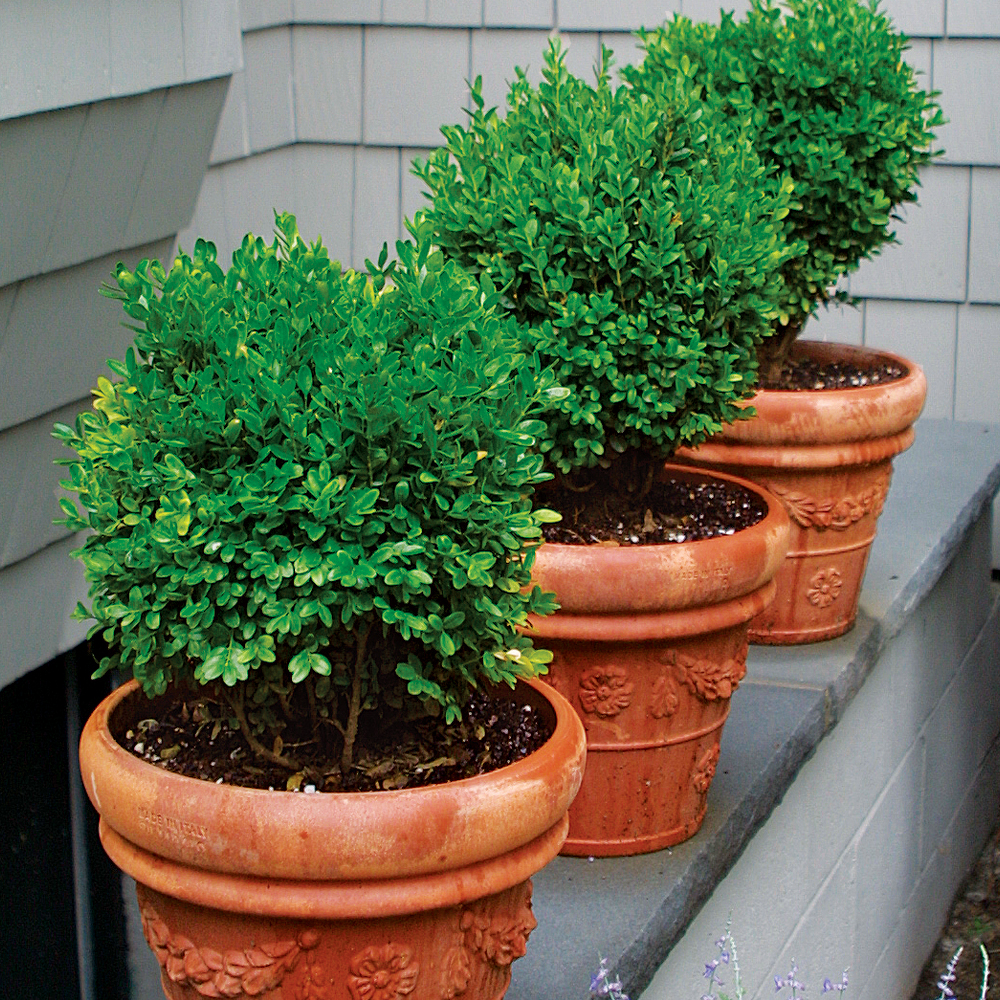
June Hutson is supervisor of the Kemper Home Demonstration Gardens at the Missouri Botanical Garden.
Photos, except where noted: Michelle Gervais
Illustrations: Melissa Lucas
*These plants are considered invasive in some areas. Please check invasiveplantatlas.org or your state’s list of invasive plants for more information.
Fine Gardening Recommended Products

Planting in a Post-Wild World: Designing Plant Communities for Resilient Landscapes
Fine Gardening receives a commission for items purchased through links on this site, including Amazon Associates and other affiliate advertising programs.

ARS Telescoping Long Reach Pruner
Fine Gardening receives a commission for items purchased through links on this site, including Amazon Associates and other affiliate advertising programs.
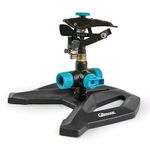
Gilmour 811673-1001 Sprinkler
Fine Gardening receives a commission for items purchased through links on this site, including Amazon Associates and other affiliate advertising programs.
- Adjustable collar for partial- to full-circle coverage
- Dial precisely sets spray distance
- On/off switch eliminates trips from sprinkler to spigot


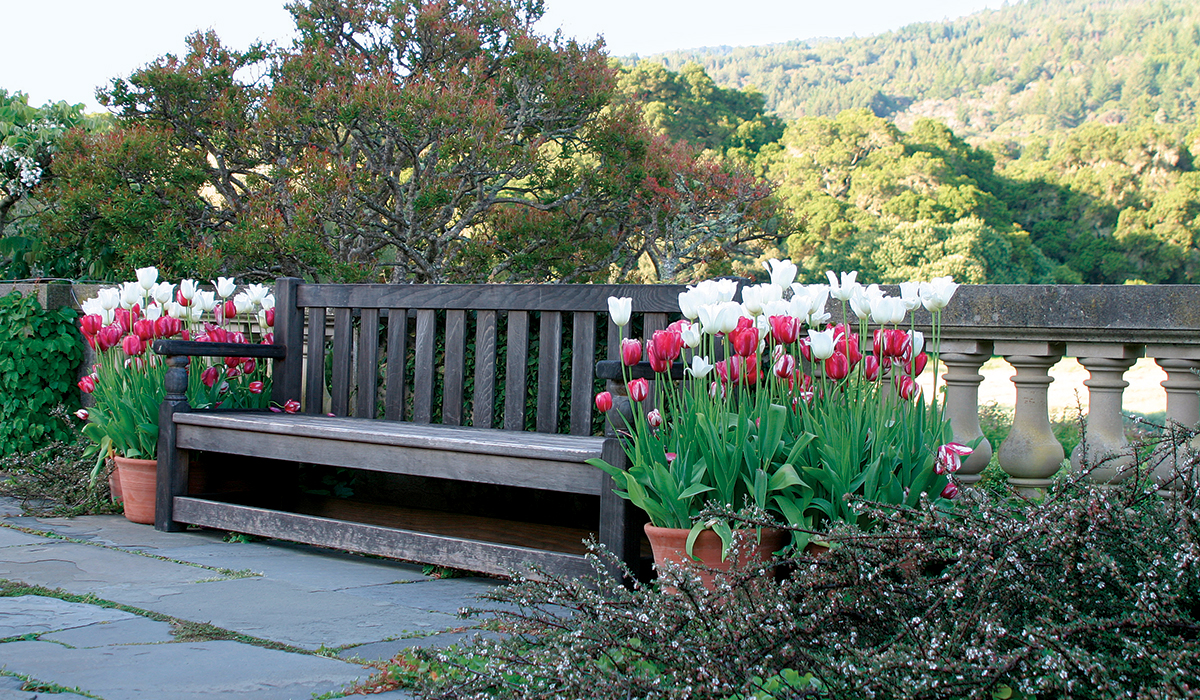




Comments
Log in or create an account to post a comment.
Sign up Log in